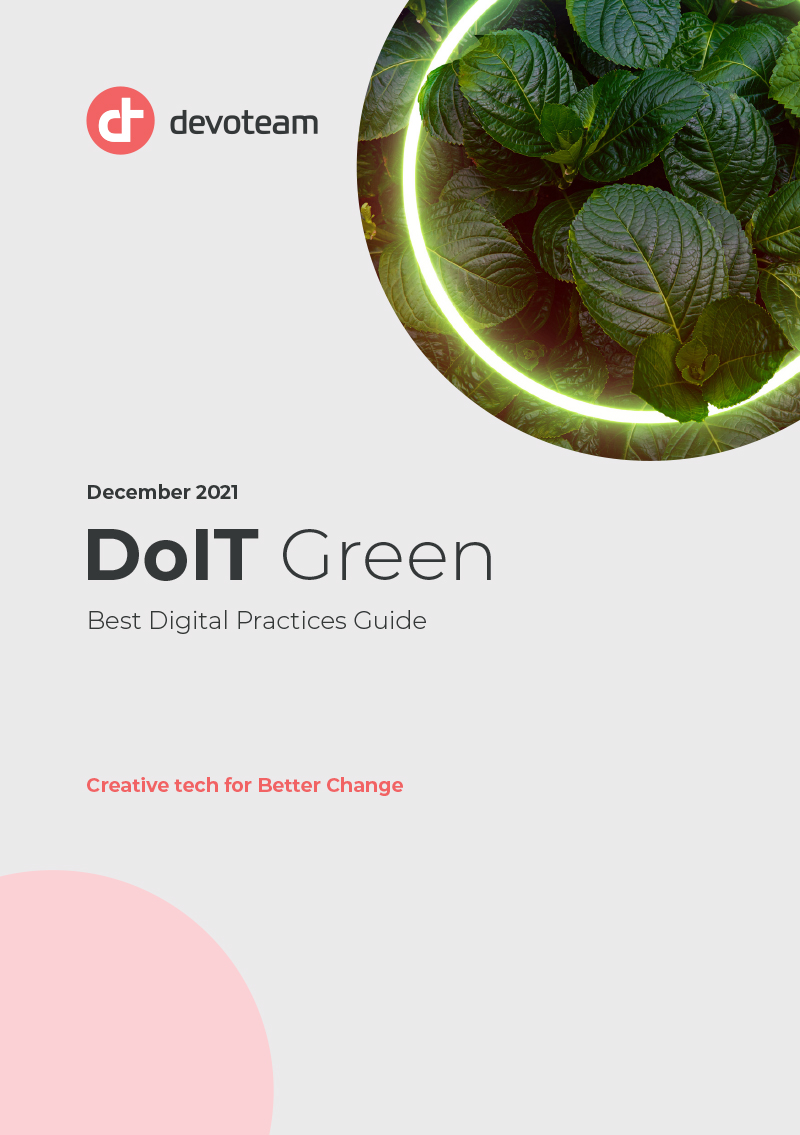Acting quickly and collectively to respond to climate change is the only option.
Today, the climate issue is no longer even up for debate, with the urgency of the situation very much on everyone’s mind. In its latest report, the IPCC even estimates that climate disruption could be greater than expected: “unless there are immediate, rapid and massive reductions in greenhouse gas emissions, limiting warming to around 1.5°C, or even 2°C, will be out of reach”. This alarming forecast requires us to act collectively and without delay.
Aware of the high stakes involved, many players (governments, companies, trade unions, associations, etc.) are working together to come up with sustainable solutions that will disrupt the ways we produce, consume, and even think. Others,
meanwhile, remain focused on their brand image without translating their ecological commitments into tangible results.
In this context, digital is increasingly targeted and cited as being among the most polluting activities. It already represents between 2.3 – 3.7% of global CO2 emissions; And it is influencing all industries, leading to a “9% annual increase in energy consumption due to digitalization”.
Devoteam developed this guide to offer a concrete, pragmatic and illustrated approach, enabling Chief Information Officers (CIOs) to accelerate their transition to a more responsible digital environment. This guide is an opportunity for us to share our stance on the challenges that need to be overcomed. We will highlight what needs to be implemented to initiate this green transformation, while drawing your attention to the key parameters that you must take into account as you set out on your action plan.
To do this, we first sought to understand how the climate emergency was being incorporated into the strategies of our clients and partners. Our experts in France analysed this market, interviewing companies that have been involved in this
thought-process for several years, across every activity sector. We interviewed around twenty of our clients, combining a structured part (completed via a dedicated questionnaire) with free discussion around the following themes:
- The existence of an environmental strategy or approach within the company;
- The concrete measures implemented to support it;
- The commitment of the organisation’s stakeholders.
We would like to express our enormous thanks to all the participants, including our strategic partners Amazon, Google, Microsoft, Salesforce and ServiceNow, for their time and the wealth of valuable information shared.
This guide summarises their collective reflections, enriched by our own views and observations of noteworthy practices, to help you answer the following questions:
- What are the factors that have led you to take action?
- What initiatives must be put in place?
- What role does IT play within the company’s environmental policy?
- What are the ways to reduce CO2 emissions?

